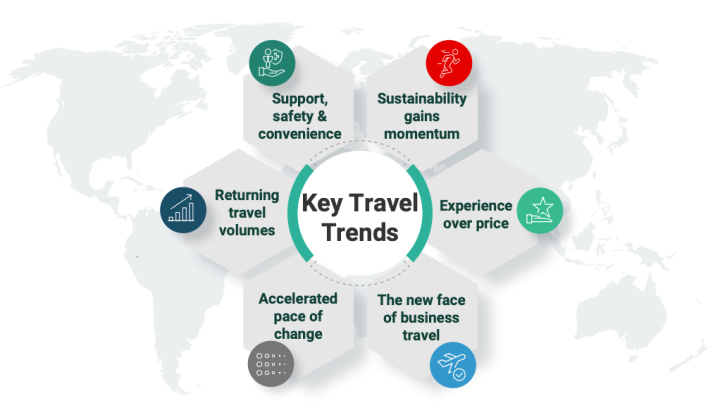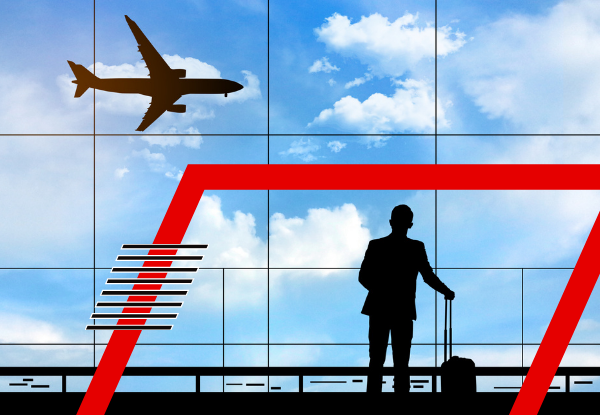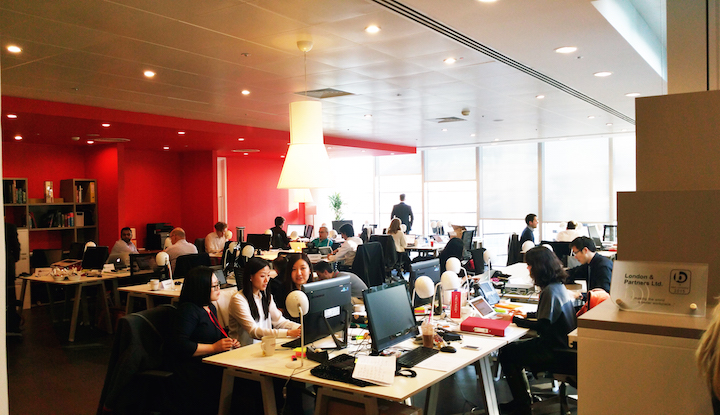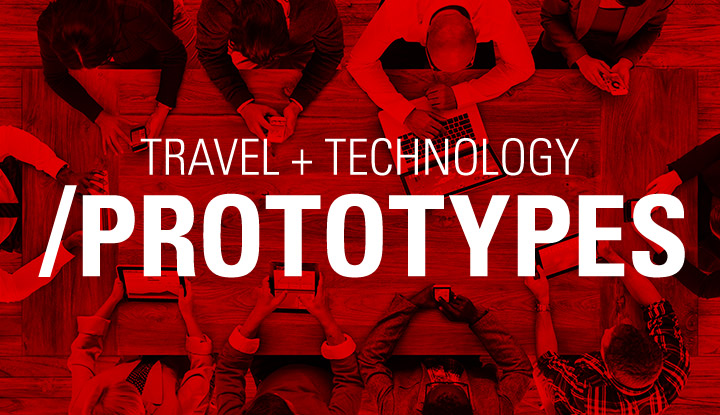Article
Sabre Puts Space Tourists, Blockchain and Neural Interfaces on the Radar
Last month, Sabre launched its latest technology predictions in the 2017 Radar Report. In line with Sabre’s enduring commitment to dynamic innovation, the report evaluates nine key technologies forecast to greatly impact the travel landscape.
“We are in the midst of increasingly rapid and dramatic technological change, poised to revolutionise how and where we travel,” says Mark McSpadden, Vice President of Emerging Products and Technologies for Sabre Corporation. “Technologies like artificial intelligence, neural interfaces and quantum computing each have the potential to produce change as dramatic as the growth of the Internet.”
Sabre Labs is Sabre’s in-house innovation team that commenced operations in 1996 as the world’s first travel focussed innovation laboratory. As Sabre Labs continues to identify tendencies and construct archetypes while hosting progressive meetings with associates, new insightful trends are frequently uncovered.
A fundamental priority for Sabre in 2017 is investing in industry leading infrastructure and accelerating new product development. A billion dollars is invested in technology and product development each year to ensure Sabre remains the industry leader in this space. Another significant tenor is increasing customer engagement through thought leadership. This is a major reason why the research conducted by Sabre Labs is so important. Delving deeply into the needs of the traveller enables Sabre to examine industry insights, unlocking the key to enhanced personalisation .
83% of customers expect relevant information and products to be recommended to them based on their personal preferences . 73% like to buy from brands that personalise the shopping experience and 88% value relevancy in their shopping journey. It is little wonder why two in three Corporate Travel Managers today consider personalisation a high priority.
Personalisation matters. The trick to making it work for you is ensuring you stay in top of the individual traveller and what their unique inclinations are. Customers want convenience, connection and context – they want personalised experiences because they want to feel like their interests and preferences are taken seriously.
Sabre Labs considers how emerging technologies are impacting travel. This latest report looks at areas of development such as artificial intelligence, augmented reality, autonomous reality, autonomous delivery, block chain, quantum computing and space tourism.
Space Tourism
Though we’ve now experienced life in the Space Age for well over half a century, space travel remains exceptionally rare with only a small selection of privileged individuals taking part. Less than 600 people have ever been lucky enough to pass beyond the Kármán Line . The Karman Line is the intersection around 100km above Earth that marks the beginning of space or known by some as the altitude boundary separating Aeronautics and Astronautics .
Many people are eager to travel across the Karman Line and in time it is expected that space travel will become an affordable holiday option for all. Virgin Galactic, SpaceX, and Blue Origin are just three of the companies poised to offer space missions to private astronauts.
Initially, hitching a ride on one of these rockets will set you back hundreds of thousands of dollars. Developments in technology however are expected to make space travel more affordable, allowing everyday people of more modest fortunes to travel to outer space .
Our thirst for adventure and our innate need to explore our surroundings has driven the progression of science and technology for centuries. The human race’s sights are now set on Mars. NASA has a goal of sending humans to Mars in the 2030s. We are well on our way to getting there, landing there, and living there. Soon Mars may indeed replace Antarctica, deep sea diving and Everest as the ultimate travel goal.
Between 2001 and 2009, seven civilians visited the International Space Station, becoming the first true space tourists . Marketable lunar flights, resorts in low earth orbit and planetary fly-bys are edging closer and closer, making the fantasy of space tourism an impending reality.
Corporations however are yet to safely bring a viable offering to market. Virgin Galactic is committed to débuting its space-flight programme in 2018. 500 passengers have already prepaid for their upcoming journey and at $250,000 a ticket, they are no doubt keenly awaiting take off.
Anything more than a quick glimpse of space makes the cost skyrocket. A 2018 SpaceX trip around the moon for example will set you back somewhere between $175 million and $300 million. However unbelievable this sounds, deposits have already been paid for the only two seats set aside for private leisure passengers .
An interesting insight profiled by Sabre in this latest report looks at the development of aircraft machinery in the context of Space Tourism. Cutting-edge technology is being developed for near space flights, with prototype tests for hypersonic aircraft underway.
One of the coolest things hypersonic aircraft can do is travel at Mach 5 and above, which is around seven times the speed of a Boeing 787 or Airbus A380. Should this technology become mainstream, cross Atlantic flight times could be reduced to an hour and travellers may enjoy the benefits of a two hour flight from Sydney to London.
Neural Interfaces
Sabre Lab’s Radar Report studies neural interfaces and the integration of mind and machine. The average human brain has over 80 billion neurons and processes around a billion billion calculations per second (uh huh…that’s 1,000,000,000 squared.) These calculations are based on two directional routes, the transmission of new information into the brain and the removal of previously decoded data and signals. Neural interfaces look at both sides of this intellectual equation and consider invasive and non-invasive methods of exchange.
Invasive neural interfaces—materially inserting something into the physical body—have been in development for decades in medicine, providing lifesaving assistance to people with disabilities. Scientists for example are currently examining the vagus nerve and whether its electrical stimulation can treat autoimmune diseases such as lupus and Crohn’s disease . Several pharmaceutical companies are investing in ‘electroceuticals’ — devices that can modulate nerves — to treat cardiovascular and metabolic diseases .
When neural interfaces are considered in the context of the evolutionary pathway of the computer, it seems that they are the next natural progression. From basic punch cards to keyboards, from mice to voice recognition, using our minds to control what we see on screen may just be the next big thing following the proliferation of the touch screen.
In fact, Facebook has a team of more than 60 engineers working on a neural interface to allow people to type using just their minds. The team plans to be able to scan a brain more than 100 times per second, translating words spoken si¬lently into text .
The convergence of mind and machine has allowed our thoughts to take shape in the real world. It’s an exciting time to be in travel tech, as technology attempting to make sense of our brain impulses is explored. Standard applications such as transporting your automated luggage with just a thought may be just around the corner.
Blockchain
Oxford Dictionaries defines “Blockchain” as “a digital ledger in which transactions made in bitcoin or another cryptocurrency are recorded chronologically and publically” . The word has gained currency in the past few years as it has been used to describe a new “Internet of Trust”. Blockchain allows direct transfer between parties without requiring trust. These direct transfers may including currency, property, identity, loyalty, votes, media, etc.
The new report by Sabre Labs looks at short and long term effects of blockchain most likely to change the travel landscape. Much of its power comes from confusion and a sense of clouded mystery – we know it is significant, we may even know why, but we haven’t the slightest clue how to articulate it.
Put into the simplest of terms, blockchain is self-descriptive. It literally refers to blocks of information that are added one by one to each other like links in a chain. All the blocks in the chain must follow a common set of rules, which are established by the first block. A data block that does not adhere to the chain’s shared set of rules will not be able to bond to the rest of the sequence.
Every time a new block of information is added to the chain, the entire chain is tested to make sure nothing is out of place. Chains are unbreakable or “immutable”–once a block is in place, it can’t be moved or changed without taking the whole chain apart .
The big players today have cottoned on to the value of using blockchain. They can see that applying it to projects and large-scale corporate enterprise agreements is worth the investment in understanding how it works.
The Ethereum platform , an impressive online platform that runs smart contracts, has over 500 decentralised applications live or underway . We’re also now starting to see innovative blockchain prototypes entering into the travel arena.
Webjet for example is currently trialling hotel room inventory on blockchain to speed up the processing of payments. Airbus is part of a Hyperledger Blockchain Consortium, which is looking at using blockchain to track diplomas, certifications and qualifications industry-wide. Other organisations are looking at possibilities around the use of blockchain in identity management, biometric identification and securing digital proof identity .
“The next generation will see a radical transformation of how we live, work and play,” says McSpadden. “We see opportunities for businesses to start implementing technologies like block chain to help shape a more seamless, safe and personalised future for travel.”
Visit www.sabre.com/labs/radarreport/ to download the report.






